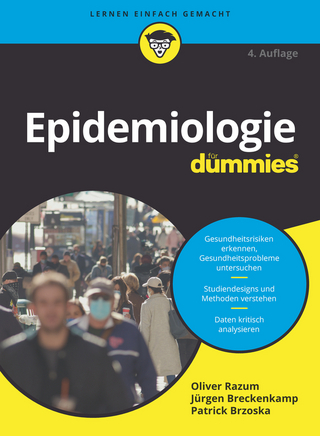Mathematical Epidemiology
Springer Berlin (Verlag)
978-3-540-78910-9 (ISBN)
Based on lecture notes of two summer schools with a mixed audience from mathematical sciences, epidemiology and public health, this volume offers a comprehensive introduction to basic ideas and techniques in modeling infectious diseases, for the comparison of strategies to plan for an anticipated epidemic or pandemic, and to deal with a disease outbreak in real time. It covers detailed case studies for diseases including pandemic influenza, West Nile virus, and childhood diseases. Models for other diseases including Severe Acute Respiratory Syndrome, fox rabies, and sexually transmitted infections are included as applications. Its chapters are coherent and complementary independent units. In order to accustom students to look at the current literature and to experience different perspectives, no attempt has been made to achieve united writing style or unified notation.
Notes on some mathematical background (calculus, matrix algebra, differential equations, and probability) have been prepared and may be downloaded at the web site of the Centre for Disease Modeling (www.cdm.yorku.ca).
Fred Brauer is a professor emeritus at the University of Wisconsin - Madison, where he taught from 1960 to 1999, and has been an honorary professor at the University of British Columbia since 1997. He is the author or co-author of 115 papers on differential equations, mathematical population biology, and mathematical epidemiology as well as 10 books including undergraduate texts and a book on models in population biology and epidemiology jointly with Carlos Castillo - Chavez.
and General Framework.- A Light Introduction to Modelling Recurrent Epidemics.- Compartmental Models in Epidemiology.- An Introduction to Stochastic Epidemic Models.- Advanced Modeling and Heterogeneities.- An Introduction to Networks in Epidemic Modeling.- Deterministic Compartmental Models: Extensions of Basic Models.- Further Notes on the Basic Reproduction Number.- Spatial Structure: Patch Models.- Spatial Structure: Partial Differential Equations Models.- Continuous-Time Age-Structured Models in Population Dynamics and Epidemiology.- Distribution Theory, Stochastic Processes and Infectious Disease Modelling.- Case Studies.- The Role of Mathematical Models in Explaining Recurrent Outbreaks of Infectious Childhood Diseases.- Modeling Influenza: Pandemics and Seasonal Epidemics.- Mathematical Models of Influenza: The Role of Cross-Immunity, Quarantine and Age-Structure.- A Comparative Analysis of Models for West Nile Virus.
From the reviews:
"This book presents a ... complete picture of mathematical epidemiology from the point of view of the applied mathematics community. ... The stated goal of the book is to 'persuade epidemiologists and public health workers that mathematical modelling can be of use to them.' ... There seems to be material for almost every kind of student, with a minimal background in calculus and probability theory ... . A real life lesson that we cannot neglect." (Hernán G. Solari, Mathematical Reviews, Issue 2009 k)
| Erscheint lt. Verlag | 30.4.2008 |
|---|---|
| Reihe/Serie | Lecture Notes in Mathematics | Mathematical Biosciences Subseries |
| Co-Autor | L.J.S. Allen, C.T. Bauch, C. Castillo-Chavez, D. Earn, Z. Feng, M.A. Lewis, J. Li, M. Martcheva, M. Nuno, J. Watmough, M.J. Wonham, P. Yan |
| Zusatzinfo | XVIII, 414 p. 71 illus., 27 illus. in color. |
| Verlagsort | Berlin |
| Sprache | englisch |
| Maße | 155 x 235 mm |
| Gewicht | 734 g |
| Themenwelt | Mathematik / Informatik ► Mathematik ► Wahrscheinlichkeit / Kombinatorik |
| Studium ► Querschnittsbereiche ► Epidemiologie / Med. Biometrie | |
| Schlagworte | 92D30, 92D25, 34D05, 60J80, 60G05 • Applied Nonlinear Dynamics • Epidemics • epidemiology • Mathematical epidemiology • mathematics for public health • network modeling and stochastic analysis for disea • network modeling and stochastic analysis for disease spread • nonlinear differential equations • Ordinary differential equations • pandemic influenza • pandemics |
| ISBN-10 | 3-540-78910-3 / 3540789103 |
| ISBN-13 | 978-3-540-78910-9 / 9783540789109 |
| Zustand | Neuware |
| Haben Sie eine Frage zum Produkt? |
aus dem Bereich




